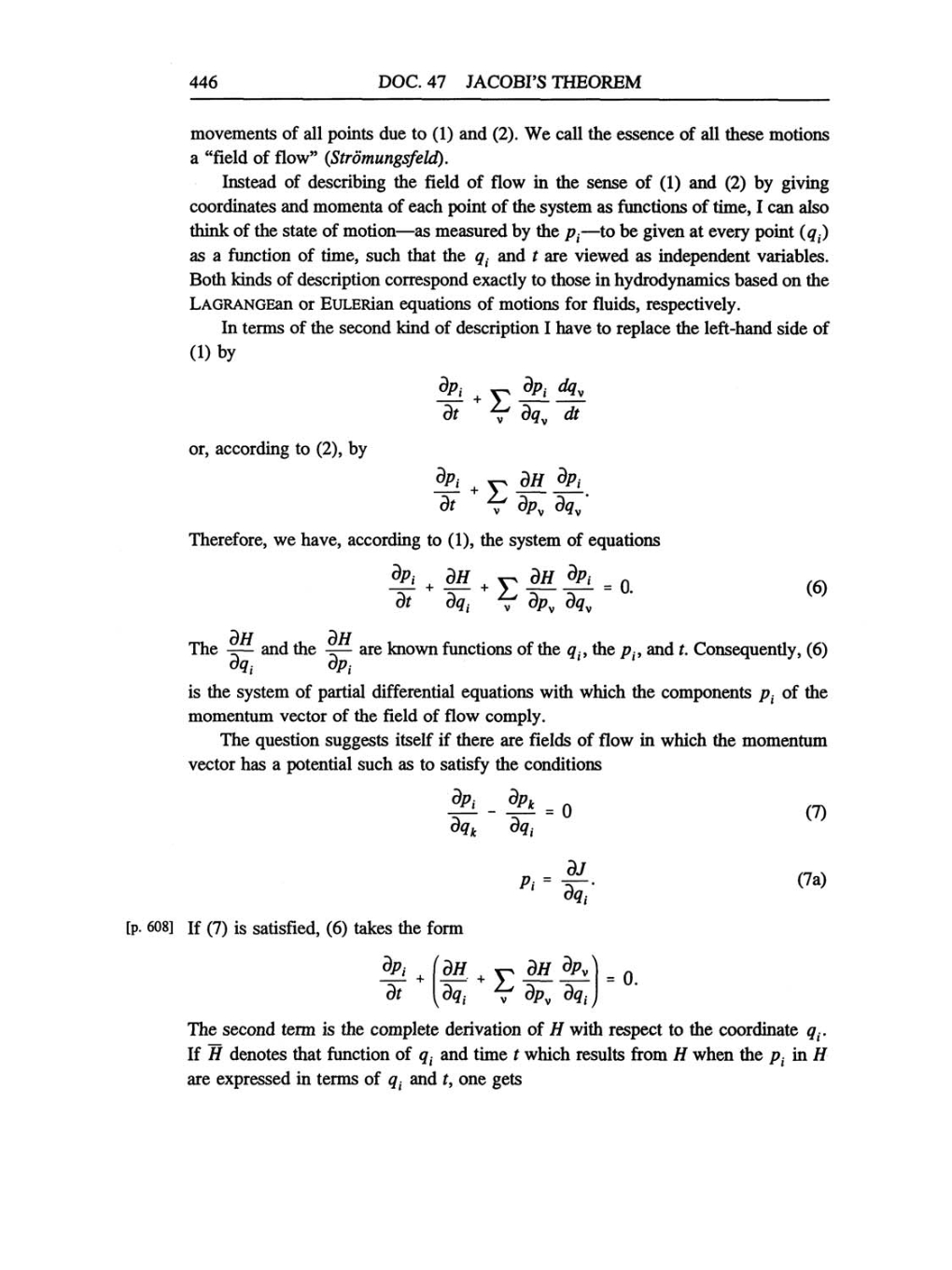446
DOC.
47 JACOBI'S THEOREM
movements
of all
points
due to
(1)
and
(2).
We call the
essence
of all these motions
a
"field of
flow"
(Strömungsfeld).
Instead of
describing
the
field
of
flow in the
sense
of
(1)
and
(2) by giving
coordinates and momenta of each
point
of
the
system as
functions
of
time,
I
can
also
think of the state
of motion-as
measured
by
the
pi-to
be
given
at
every point (qi)
as a
function
of
time,
such that the
qi
and
t
are
viewed
as
independent
variables.
Both kinds
of
description correspond exactly
to
those in
hydrodynamics
based
on
the
LAGRANGEan
or
EULERian
equations
of motions for
fluids,
respectively.
In
terms
of the second kind of
description
I have to
replace
the left-hand side
of
(1) by
dp,
dt
E
dp,
dq
dqv
dt
or, according
to
(2),
by
dp,
^
y
dH
dp,
dt
V
dp,
dqv
Therefore,
we
have,
according
to
(1),
the
system
of
equations
dPi
dt
dq.
+
*L
+
v
dH
dp,
= V
dpv dqv
'
'
(6)
The
dH-dqi
and the
dH-dpi
are
known functions
of
the
qi,
the
pi,
and
t.
Consequently,
(6)
is the
system
of
partial
differential
equations
with
which
the
components
pi
of
the
momentum vector
of the field
of
flow
comply.
The
question suggests
itself
if
there
are
fields
of
flow in which the
momentum
vector has
a
potential
such
as
to
satisfy
the conditions
dPj dpk
dqk
dq,
=
0
(7)
Pi
=
dJ
dq,'
(7a)
[p.
608]
If
(7)
is
satisfied, (6)
takes the form
dp,
dH
+
;
dt
dq,
E
dH
dpv
dpv
dq,t
=
0.
The second term is the
complete
derivation
of H
with
respect
to the coordinate
qi.
If
H denotes that function
of
qi
and time t which results from H when the
pi
in
H
are expressed
in terms
of
qi
and
t,
one gets
